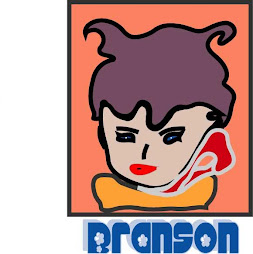Past medical testing on humans revealed From the Associated Press. The Medical Establishment would Never do that, would they? Excerpts:
"It's not that we're out infecting anybody with things," And "U.S. regulators inspected fewer than 1 percent of foreign clinical trial sites."
Put those two sentences together, and the second invalidates the certainty of the first. We inspect less than one percent of foreign research sites. Can we be sure this type of research has been fully halted? How can we be sure the Corporate Medical Establisment isn't still testing on the disenfranchised?
If not, can we be sure there's nothing dangerous happening to those people forced into experimentation? The upside? Corporate media will be sure to expose the atrocities six decades after the fact.
Sleep well!
Shocking as it may seem, U.S. government doctors once thought it was fine to experiment on disabled people and prison inmates. Such experiments included giving hepatitis to mental patients in Connecticut, squirting a pandemic flu virus up the noses of prisoners in Maryland, and injecting cancer cells into chronically ill people at a New York hospital.
..
U.S. officials also acknowledged there had been dozens of similar experiments in the United States — studies that often involved making healthy people sick.
..
At best, these were a search for lifesaving treatments; at worst, some amounted to curiosity-satisfying experiments that hurt people but provided no useful results.
And:
Some of these studies, mostly from the 1940s to the '60s, apparently were never covered by news media. Others were reported at the time, but the focus was on the promise of enduring new cures, while glossing over how test subjects were treated.
Examples:
A federally funded study begun in 1942 injected experimental flu vaccine in male patients at a state insane asylum in Ypsilanti, Mich., then exposed them to flu several months later. It was co-authored by Dr. Jonas Salk, who a decade later would become famous as inventor of the polio vaccine.
Some of the men weren't able to describe their symptoms, raising serious questions about how well they understood what was being done to them. One newspaper account mentioned the test subjects were "senile and debilitated." Then it quickly moved on to the promising results.
..
A University of Minnesota study in the late 1940s injected 11 public service employee volunteers with malaria, then starved them for five days. Some were also subjected to hard labor, and those men lost an average of 14 pounds. They were treated for malarial fevers with quinine sulfate. One of the authors was Ancel Keys, a noted dietary scientist who developed K-rations for the military and the Mediterranean diet for the public. But a search of various news archives found no mention of the study.
..
Though people in the studies were usually described as volunteers, historians and ethicists have questioned how well these people understood what was to be done to them and why, or whether they were coerced.
And:
Around the time of World War II, prisoners were enlisted to help the war effort by taking part in studies that could help the troops. For example, a series of malaria studies at Stateville Penitentiary in Illinois and two other prisons was designed to test antimalarial drugs that could help soldiers fighting in the Pacific.
It was at about this time that prosecution of Nazi doctors in 1947 led to the "Nuremberg Code," a set of international rules to protect human test subjects. Many U.S. doctors essentially ignored them, arguing that they applied to Nazi atrocities — not to American medicine.
And:
By the early 1970s, even experiments involving prisoners were considered scandalous. In widely covered congressional hearings in 1973, pharmaceutical industry officials acknowledged they were using prisoners for testing because they were cheaper than chimpanzees.
..
Edward "Yusef" Anthony, featured in a book about the studies, says he agreed to have a layer of skin peeled off his back, which was coated with searing chemicals to test a drug. He did that for money to buy cigarettes in prison.
"I said 'Oh my God, my back is on fire! Take this ... off me!'" Anthony said in an interview with The Associated Press, as he recalled the beginning of weeks of intense itching and agonizing pain.
..
The U.S. Bureau of Prisons in the mid-1970s effectively excluded all research by drug companies and other outside agencies within federal prisons.
As the supply of prisoners and mental patients dried up, researchers looked to other countries.
It made sense. Clinical trials could be done more cheaply and with fewer rules. And it was easy to find patients who were taking no medication, a factor that can complicate tests of other drugs.
Additional sets of ethical guidelines have been enacted, and few believe that another Guatemala study could happen today. "It's not that we're out infecting anybody with things," Caplan said.
..
Last year, the U.S. Department of Health and Human Services' inspector general reported that between 40 and 65 percent of clinical studies of federally regulated medical products were done in other countries in 2008, and that proportion probably has grown. The report also noted that U.S. regulators inspected fewer than 1 percent of foreign clinical trial sites.
"It's not that we're out infecting anybody with things," And "U.S. regulators inspected fewer than 1 percent of foreign clinical trial sites."
Put those two sentences together, and the second invalidates the certainty of the first. We inspect less than one percent of foreign research sites. Can we be sure this type of research has been fully halted? How can we be sure the Corporate Medical Establisment isn't still testing on the disenfranchised?
If not, can we be sure there's nothing dangerous happening to those people forced into experimentation? The upside? Corporate media will be sure to expose the atrocities six decades after the fact.
Sleep well!









































































































No comments:
Post a Comment